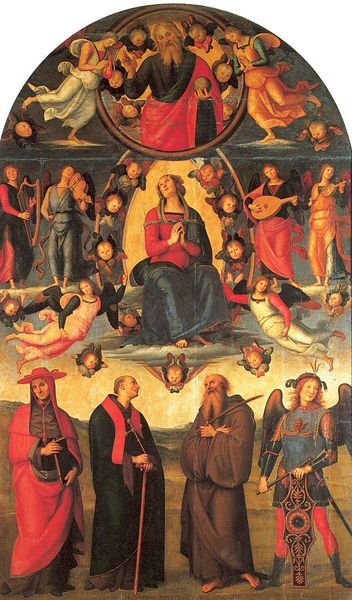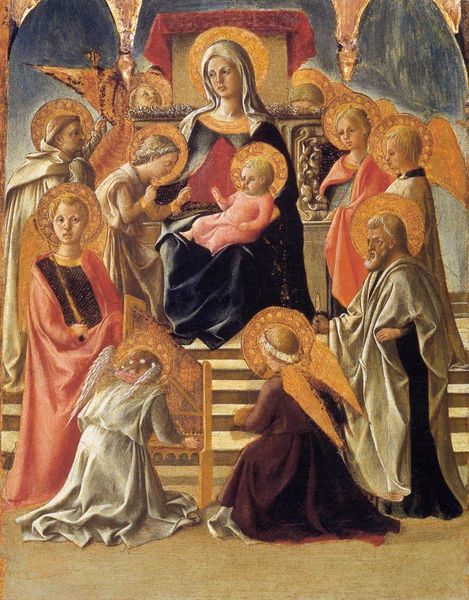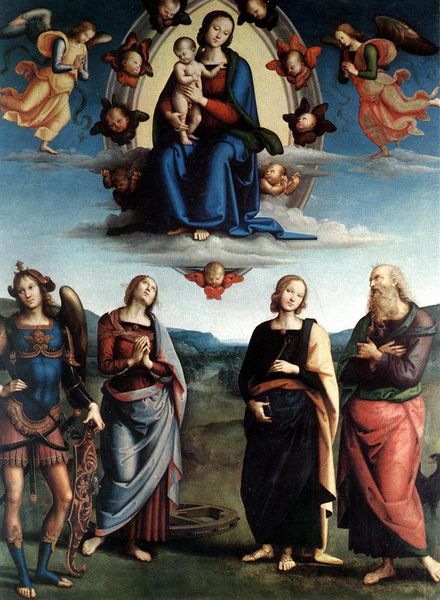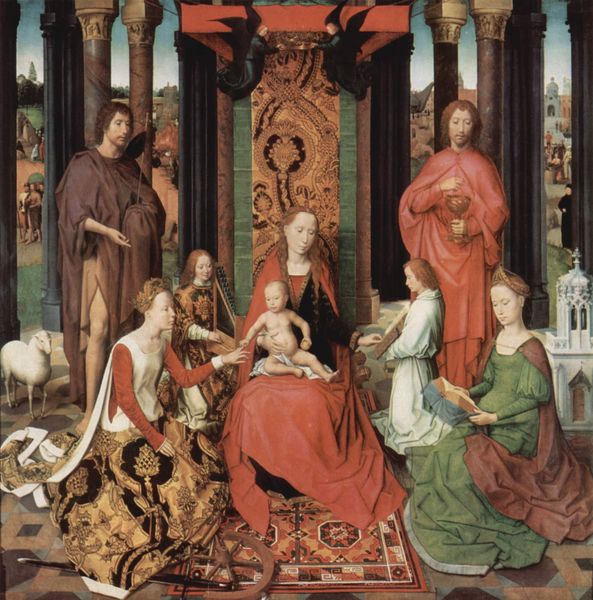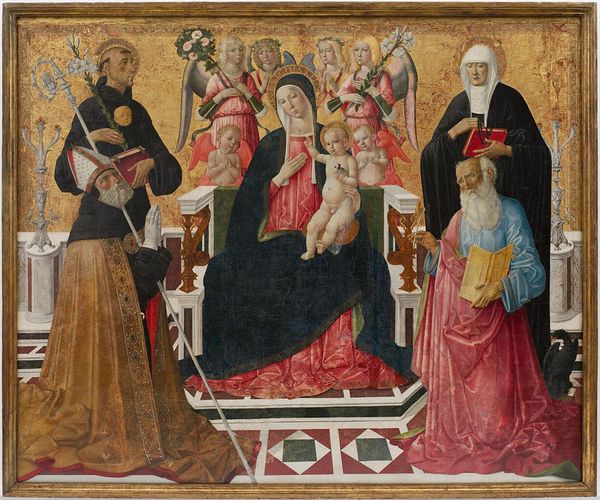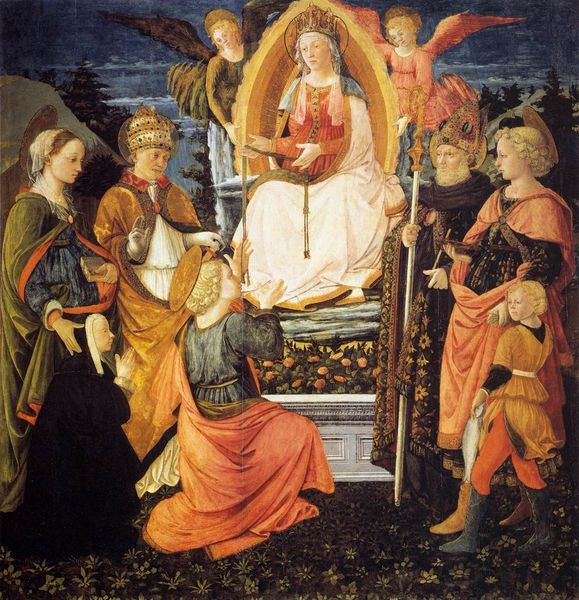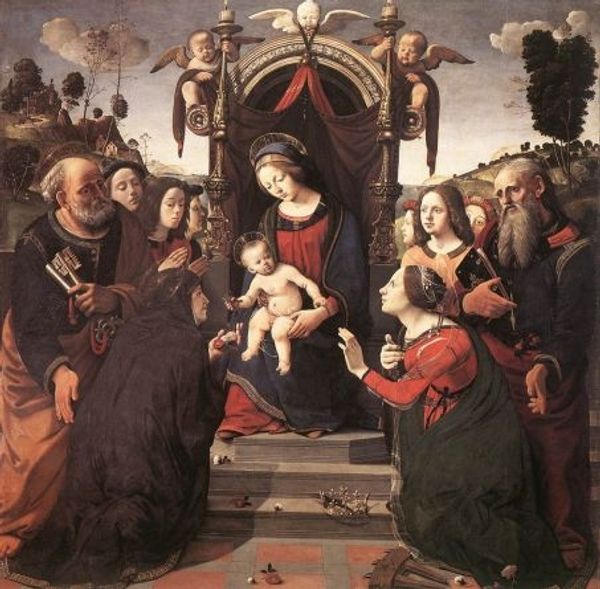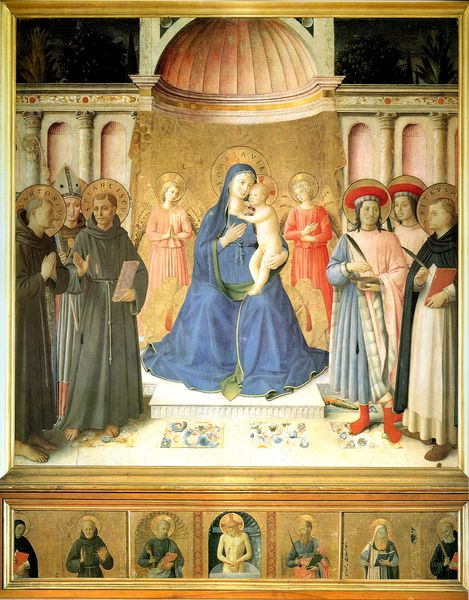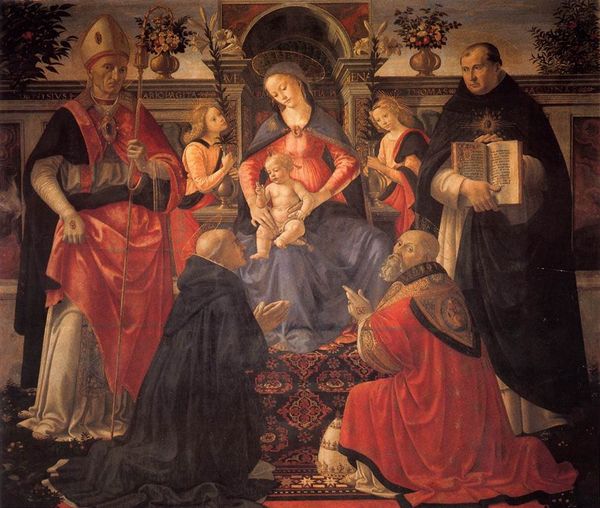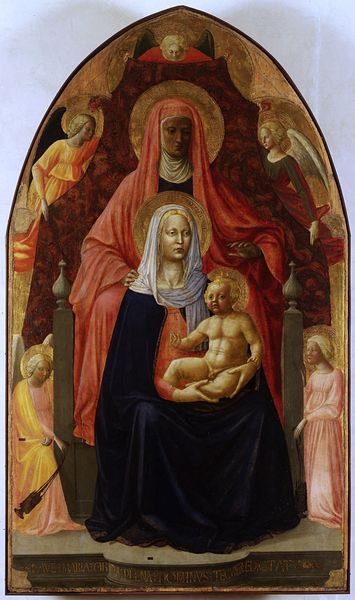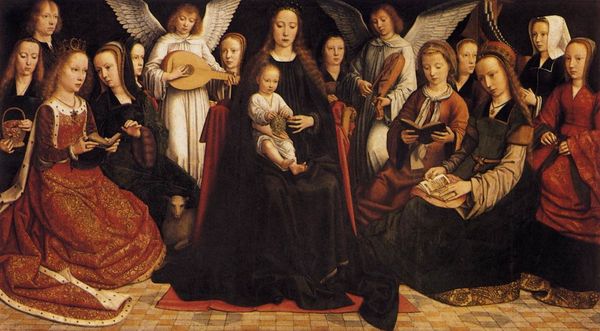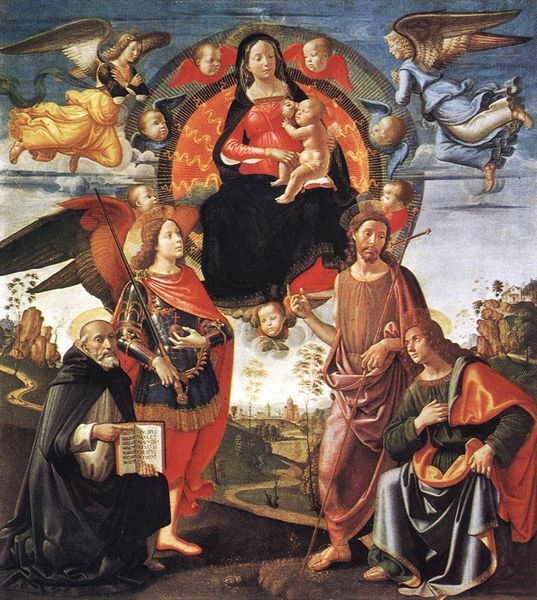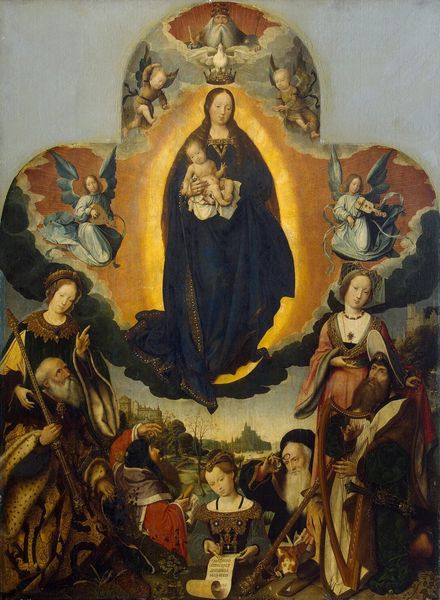
tempera, painting, oil-paint
#
portrait
#
tempera
#
painting
#
oil-paint
#
figuration
#
oil painting
#
underpainting
#
group-portraits
#
italian-renaissance
#
early-renaissance
#
portrait art
Copyright: Public domain
Francesco Botticini painted this image of the Madonna della Misericordia in the late fifteenth century, during the Florentine Renaissance. Botticini depicts the Virgin Mary sheltering kneeling donors beneath her cloak. The image suggests a symbolic transaction between wealthy patrons and the Church. This exchange of money for spiritual grace was a common practice during this time, as wealthy families often commissioned religious art for private chapels or public spaces, reinforcing their social status and piety. The composition emphasizes the Madonna's protective role, while angels above her head prepare to place a crown on her head. In Renaissance Italy, patronage was an essential part of the art world. Artists relied on the support of wealthy individuals and institutions like the Church to create their work. To fully understand this image, art historians consult archival documents, such as contracts and inventories. By examining these historical contexts, we gain insight into the social and economic forces that shaped this compelling representation of devotion and power.
Comments
No comments
Be the first to comment and join the conversation on the ultimate creative platform.
